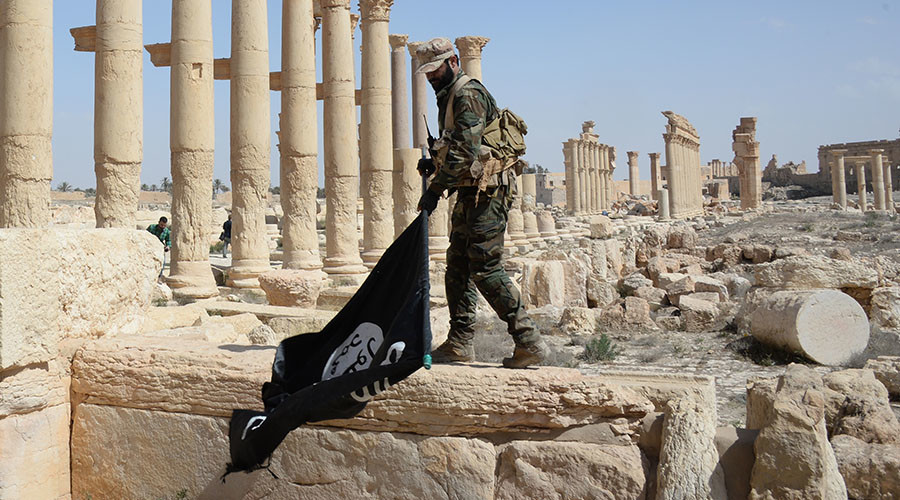 Brandon Turbeville
Brandon Turbeville
March 28, 2016
About ten months ago, the World Heritage Site, the city of Palmyra, fell under control of the so-called “ISIS” or “ISIL,” a network of terrorists that would not even be in existence were it not for the support of the United States and the “U.S.-led coalition.”
During the time that the U.S. was supposedly engaged in its fight against ISIS, hundreds of ISIS convoys crossed great distances in the Syrian and Iraqi deserts, from Ramadi in Iraq to Palmyra City in Syria, all under the eyes and the advanced radar systems of the U.S.-led coalition. Of course, this coalition didn’t even lift a finger despite the fact that they saw all of this happening.
Since 2013, the U.S- led coalition in Syria and Iraq has been “fighting ISIS” but the presence of the coalition has actually led to a viral spread of the terrorist organization within Syria and Iraq. ISIS then began destroying the historical heritage of both countries in order to eliminate any cultural background of the real civilizations of these countries, much like the Israeli method that removes the real identity of the land it occupies. Even the United States’ reaction to the spread of ISIS was a disgrace.
Spokesman for the U.S. State Department, Marie Harf, declared that the U.S. could do nothing to prevent this destruction and added that, because of this, the United States is trying to push ISIL out of Iraq and that they are trying to help the Syrian “opposition” push back against ISIL in Syria!
U.S. Secretary of State, John Kerry, declared that U.S. airstrikes have slowed the ISIS advances but that defeating the jihadists could take years.
Yet such a statement ignores the fact that many times the U.S. has “mistakenly” dropped weapons to ISIS fighters themselves.
But that was their game all along – to pull the Syrian Arab Army away from important battle fronts like the one in Lebanon and al-Qalamoun, thus securing the fronts which were important to stop the influx of terrorists into Syria.
Here is why Palmyra is so important. The city is a Heritage Site for the whole world. More important in terms of material interests, however, Palmyra is rich in gas and oil resources and it is an important line to transfer them to other countries being located on the border with Iraq.
In addition, the city’s location sits almost in the middle of Syria. It is at this point where the country could potentially separate into northern and southern parts.
The liberation of Palmyra on March 27, 2016 occurred because of the great courage and the sacrifices of the Syrian Arab Army and the support of its allies.
Palmyra’s liberation was a massive blow to the American story that it is “so difficult” to defeat the jihadists and how it may take up to 10 years to accomplish it!
Instead, the same jihadists were defeated within a week in Palmyra by the Syrian Army and its allies such as the Russian military and Hezbollah.
The strategy that was carried out by the SAA and Hezbollah was done professionally so as to protect most of the ancient ruins of the City. The forces were flexible, surrounded terrorist forces, and acted in a speedy fashion whenever it pushed forward, a true testament to the power of the Army. This is yet another reason Israel and its allies in the GCC, and the United States is determined to destroy the SAA.
History, identity, tourism, and economy has defined Palmyra in the past but it has acquired even more value now because of the sacrifices made by the new soldiers of the Queen Zenobia. This is, indeed, the greatest Syrian Arab Army.
Image Credit
Afraa Dagher is a political analyst currently residing in Syria. She has made numerous media appearances commenting on the current state of affairs inside Syria as well as the nature of the current crisis. She has appeared on RT, PRESS TV, and is a regular guest on Activist Post writer Brandon Turbeville’s Truth on the Tracks radio program. Her website is www.SyrianaAfrona.wordpress.com.
No comments:
Post a Comment
Note: Only a member of this blog may post a comment.